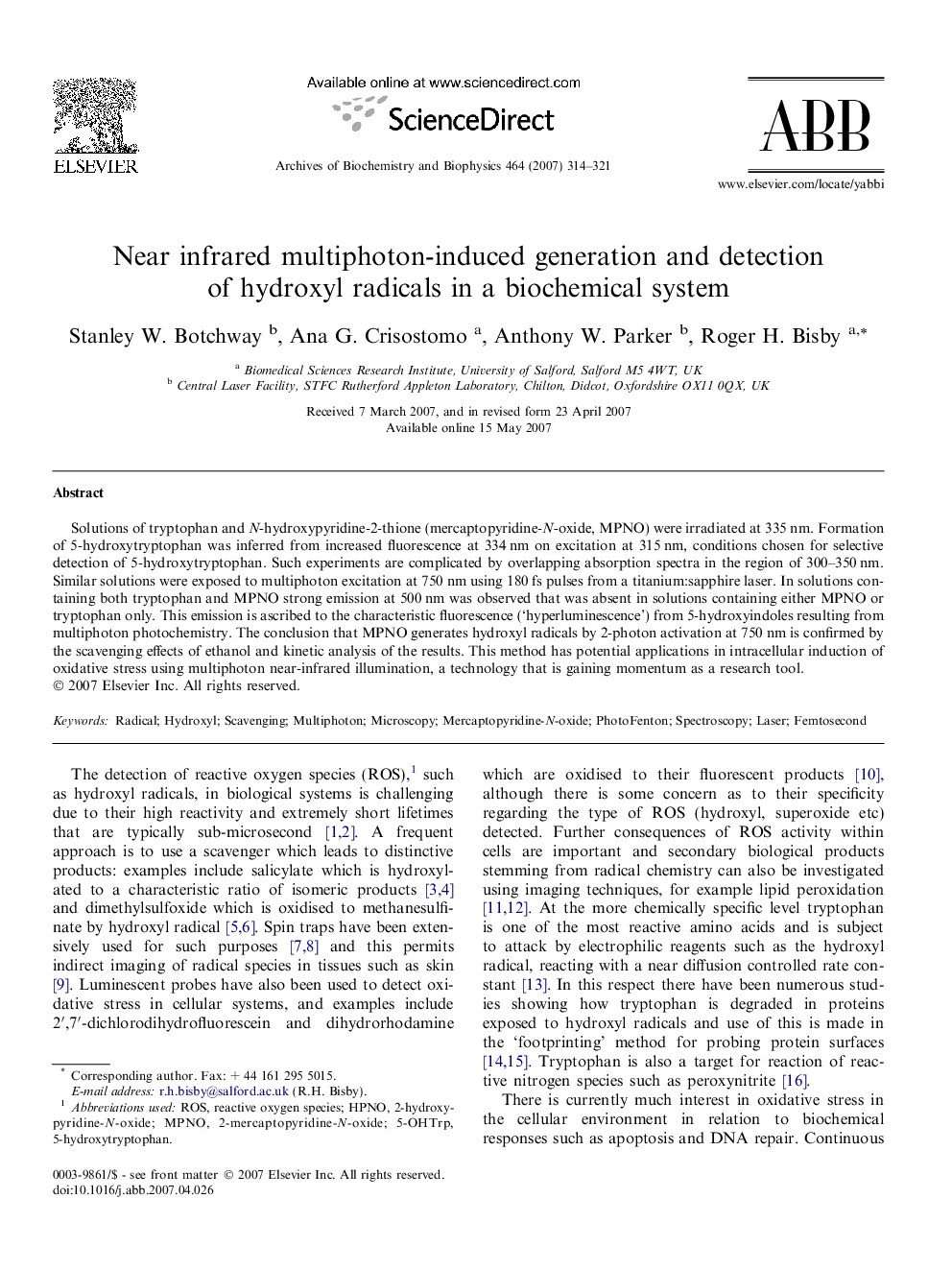| Article ID | Journal | Published Year | Pages | File Type |
|---|---|---|---|---|
| 8292194 | Archives of Biochemistry and Biophysics | 2007 | 8 Pages |
Abstract
Solutions of tryptophan and N-hydroxypyridine-2-thione (mercaptopyridine-N-oxide, MPNO) were irradiated at 335Â nm. Formation of 5-hydroxytryptophan was inferred from increased fluorescence at 334Â nm on excitation at 315Â nm, conditions chosen for selective detection of 5-hydroxytryptophan. Such experiments are complicated by overlapping absorption spectra in the region of 300-350Â nm. Similar solutions were exposed to multiphoton excitation at 750Â nm using 180Â fs pulses from a titanium:sapphire laser. In solutions containing both tryptophan and MPNO strong emission at 500Â nm was observed that was absent in solutions containing either MPNO or tryptophan only. This emission is ascribed to the characteristic fluorescence ('hyperluminescence') from 5-hydroxyindoles resulting from multiphoton photochemistry. The conclusion that MPNO generates hydroxyl radicals by 2-photon activation at 750Â nm is confirmed by the scavenging effects of ethanol and kinetic analysis of the results. This method has potential applications in intracellular induction of oxidative stress using multiphoton near-infrared illumination, a technology that is gaining momentum as a research tool.
Related Topics
Life Sciences
Biochemistry, Genetics and Molecular Biology
Biochemistry
Authors
Stanley W. Botchway, Ana G. Crisostomo, Anthony W. Parker, Roger H. Bisby,
